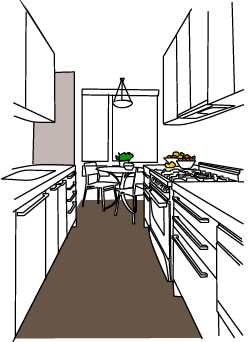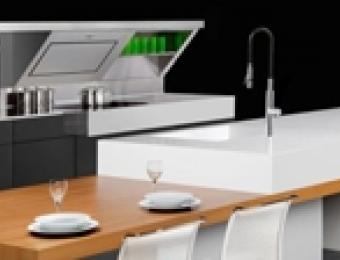
Benchtops must be installed as per the manufacturer’s requirements. Failure to do so will void the warranty. They must be fixed to cabinetry using screws, adhesives, and benchtop connectors (these are only necessary for laminates or solid timber).
It is important to realise that a benchtop must be prepared to suit the irregularities of the adjacent walls; although this is necessary only if a splashback, moulding or sealant does not cover the benchtop.
Building Code of Australia rules
The Building Code of Australia rules that unless otherwise specified, the benchtop should be provided with additional support where:
- benchtops are required to span more than 600mm between supports, or
- Cantilever more than 300mm from a support.
Joins
If the layout provides insufficient space when installing the benchtop, joins should be kept away from the holes in the bench where sinks or taps are being installed (called cutouts). The type of joins that are used will depend on the bench material, but may include straight joins at the corner, straight mitre, corner mitre, masons mitre and butt joints.
Joins must be thoroughly sealed to prevent food and waste from getting in. This is for hygiene reasons, and will help to prevent bacteria growth. Top joins must be sealed with a waterproof sealant.
Sealant
If you're installing a dishwasher under the bench, sealant is also required. The Building Code of Australia states that for dishwasher spaces, the underside of a non-moisture resistant laminate or solid timber benchtop should be sealed with an appropriate sealer. This is to reduce the chance of moisture entering the bench immediately above the dishwasher, and extending for a distance of 150mm either side of the fitted dishwasher.
Cutouts
If you're installing an appliance that requires a cutout (like a sink or cooktop), rounded internal corners are normally necessary to prevent radial cracking (depending on the material). If you're installing a stone benchtop or reconstituted stone benchtop, cutouts are often provided in separate pieces and then joined together.

